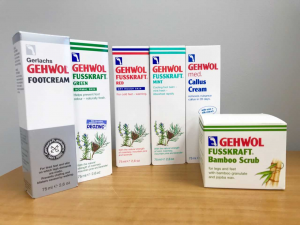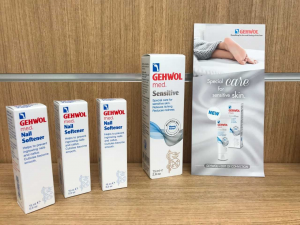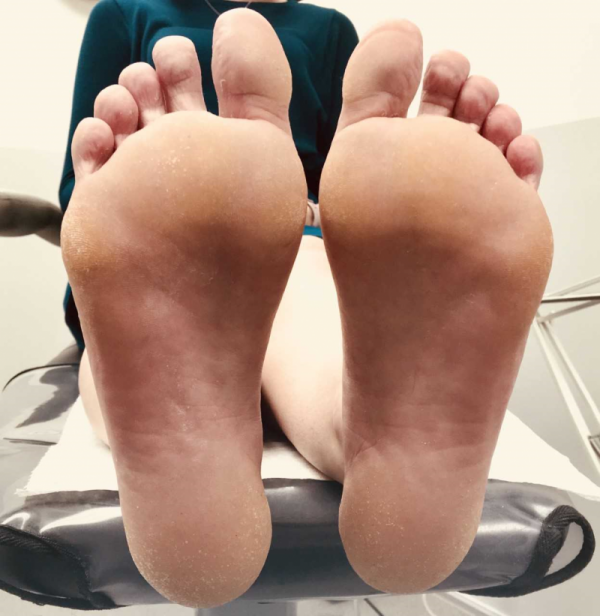It is important to recognise skin care as healthcare, particularly in the feet, which are often neglected. When you consider that our feet have to carry us throughout our whole life, from day to day chores and activities of daily living, to walks on the beach, playing sport or spending quality time with our loved ones – if our feet aren’t up to the task then everything becomes more difficult.
How often have you found yourself having to cut short that walk, or wear a different pair of shoes in order to take the pressure off a certain area of your feet? It’s possible that you have corns or calluses – hard skin in certain areas that are contributing to this discomfort. Resonance podiatrists can help to educate you about the typical sites and types of calluses and corns and other common skin disorders of the feet, as well as alleviate discomfort associated with these conditions.
Hard Skin – Callus
A common complaint of people coming to visit us at Resonance Podiatry is that they have hard skin on their feet which can get uncomfortable and which they might feel embarrassed about the appearance of. Calluses are the build-up of hard skin (hyperkeratosis) over a certain region of the foot. These changes in the skin most often come about due to friction and pressure on the skin on our feet and are our bodies way of preventing skin blistering and breaking down. At a cellular level, an increase in the number of basal epidermal cells results in both a thicker stratum spinosum (prickle cell) layer, and a thicker stratum corneum (the outer, keratinized layer of skin) which results in the harder, yellow tinged skin that we know as callus. This can often occur over areas of bony prominence and areas of high pressure, such as under the ball of the foot (forefoot) and on little toes and big toes.
So, if our skin is generating callus as a response to pressure and friction then why would we want to get rid of it? Well, we don’t – we simply need to look after our skin better. Calluses are a protective mechanism, but when they are poorly managed they can lead to skin splits, fissures and even pressure ulcers. Because callus is technically dead skin (it develops in the upper layer of skin which has no direct vascular supply), it can become extremely hard and dry if it is not moisturised regularly. When the skin becomes excessively dry and hard, it can split, crack or fissure. These splits can often be seen around people’s heels in the summer months. We want to avoid this from occurring because not only can these cracks and fissures become very painful, they can provide an entry point for bacteria which has the potential to allow an infection to develop. Pressure ulcers can occur because the peak plantar pressure underneath an area of callus is significantly higher than underneath normal skin. This means that although this hard skin is protecting us, it can also cause damage to the underlying tissue if it becomes too thick and hard, potentially leading to tissue breakdown or ulceration if not attended to by a podiatrist. Ulcers can heal readily in people with good overall health and circulation, but in members of the population with health conditions such as circulatory diseases or diabetes, they can take months or even years to heal, and in extreme cases they may never heal on their own.
Corns
Corns often form within calluses – they can be described as a keratinized lesion with a hard, central core that presses into the soft tissue below the lesion and causes pain and inflammation. This central cone-shaped core distinguishes a corn from a callus. Corns are divided into two subtypes: the hard corn (heloma durum) and the soft corn (heloma molle). The two types differ based on their characteristics, which are related to where they tend to form. Soft corns tend to occur between toes, in areas of higher moisture where the surrounding hyperkeratotic lesion encasing the core remain relatively soft. Hard corns tend to develop under the metatarsals and on the tips of toes and knuckles of toes where the skin tends to be more dry and hard. People often describe having corns as feeling like there’s a stone in their shoe. Corns can cause problems similar to those which are caused by calluses because they both increase peak tissue pressures under the lesion. However, because corns are not as easy to see and they form a focal pressure point under the central core, they are more likely to develop an underlying ulcer or area of breakdown.

 So how should we be managing corns? You may have seen or heard of corn pads – small pads which are applied to corns and contain salicylic acid, with the idea of softening the corn so it will fall out. However, softening the surrounding skin can actually create an ulcer, as it damages the normal skin and causes it to break down. The most simple way to manage a corn is to have it removed by your podiatrist. The central core of a corn is made up of keratinized cells which are ‘dead skin’, so it is generally not painful to remove them, and is a very short and easy process. Your podiatrist can also advise you on the best way to help reduce the pressure and/or friction which might be contributing to your corns or calluses.
So how should we be managing corns? You may have seen or heard of corn pads – small pads which are applied to corns and contain salicylic acid, with the idea of softening the corn so it will fall out. However, softening the surrounding skin can actually create an ulcer, as it damages the normal skin and causes it to break down. The most simple way to manage a corn is to have it removed by your podiatrist. The central core of a corn is made up of keratinized cells which are ‘dead skin’, so it is generally not painful to remove them, and is a very short and easy process. Your podiatrist can also advise you on the best way to help reduce the pressure and/or friction which might be contributing to your corns or calluses.
References
- Menz, H B; Munteanu, S E, and Zammit, G V. Plantar pressures are higher under callused regions of the foot in older people. Clinical and Experimental Dermatology, Vol 32; Issue 4. https://doi.org/10.1111/j.1365-2230.2007.02421.x
- Corns and Calluses Resulting from Mechanical Hyperkeratosis. DENISE B. FREEMAN. American Family Physician, https://www.aafp.org/afp/2002/0601/p2277.html
- https://www.dermnetnz.org/topics/corn-callus/

